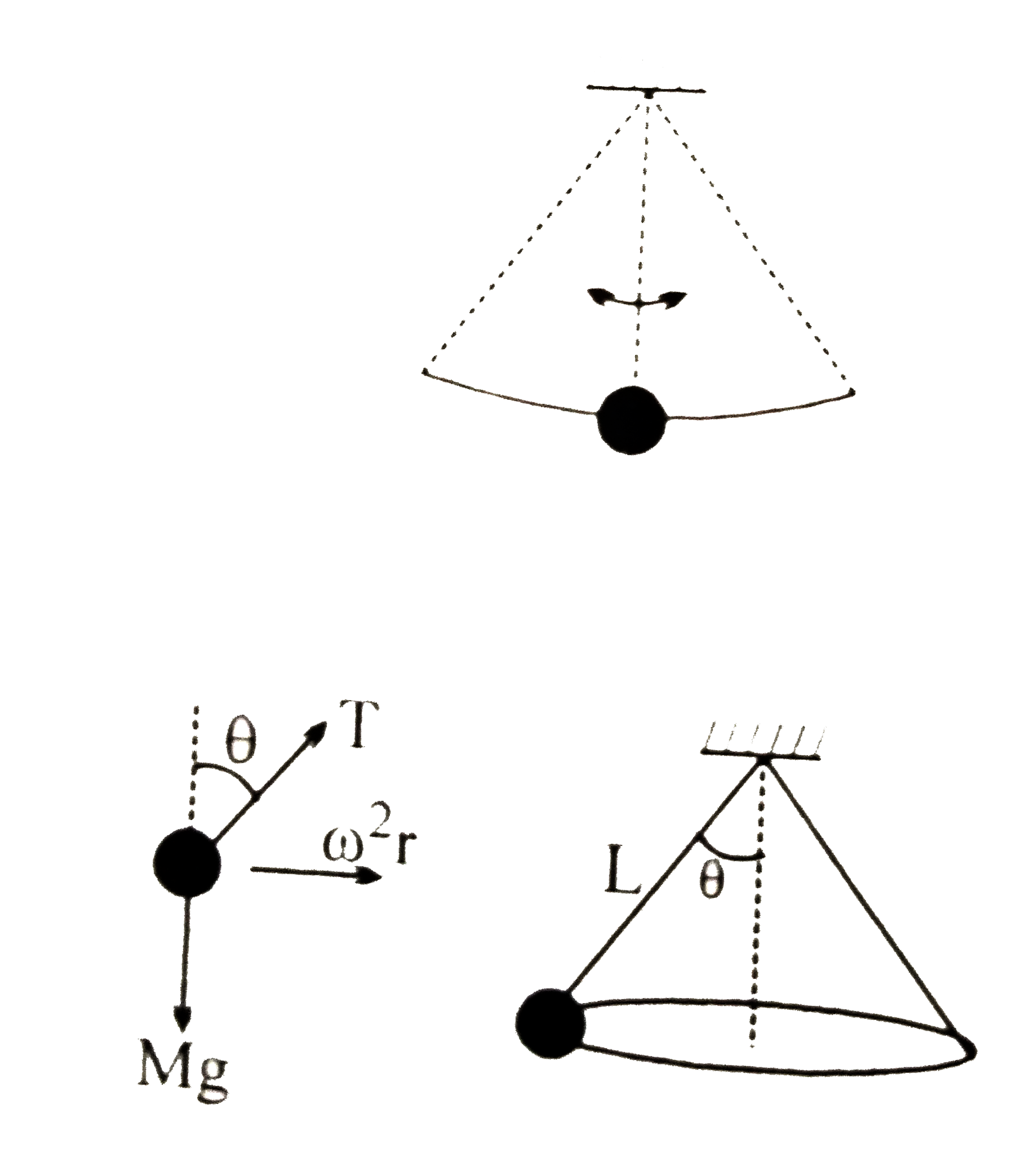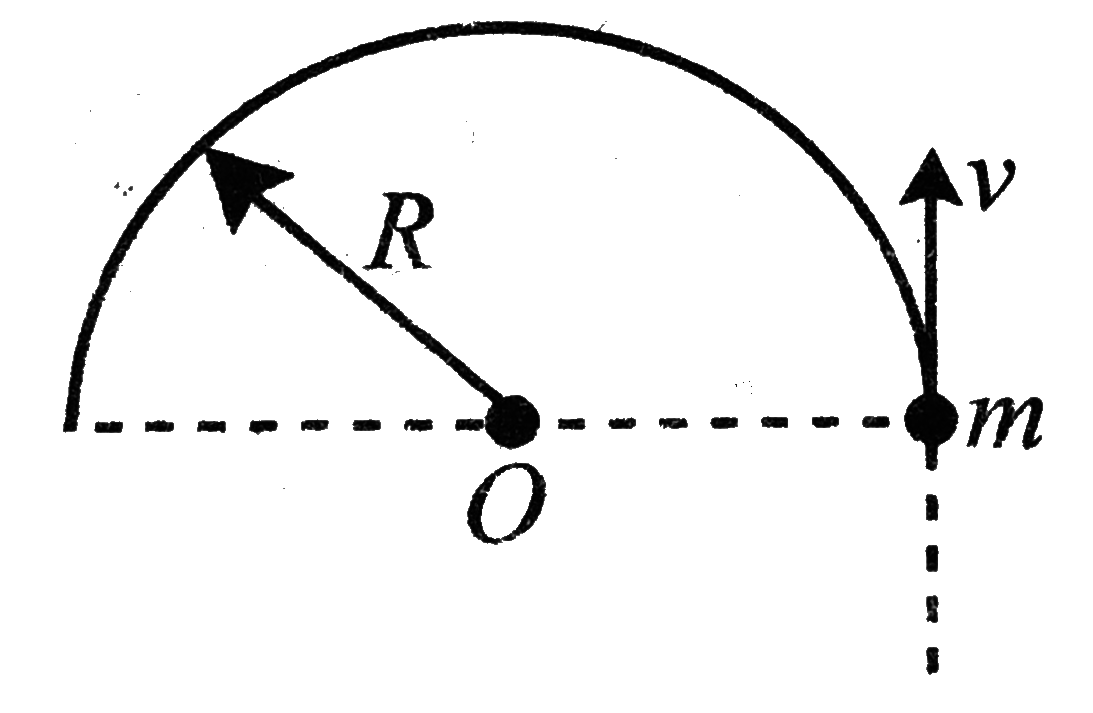A small bead with mass M is attached to a very light string hung from a ceiling. The bead on the string may ocsillalte harmonically (with small angular amplitude ) with a period 2 sec [Fig.(a)]. A student decide to perform another experiment . He takes the attached bead aside from its equilibrium and pushes it horizontally in such a way that the bead revolves in a horizontal plane [fig. (b)]. The string breaks if tension in it exceeds teh value of 4Mg where g is acceleration due to gravity. What is the minimum time (in sec ) of one revolution of the bead now ?
![A small bead with mass M is attached to a very light string hung from a ceiling. The bead on the string may ocsillalte harmonically (with small angular amplitude ) with a period 2 sec [Fig.(a)]. A student decide to perform another experiment . He takes the attached bead aside from its equilibrium and pushes it horizontally in such a way that the bead revolves in a horizontal plane [fig. (b)]. The string breaks if tension in it exceeds teh value of 4Mg where g is acceleration due to gravity. What is the minimum time (in sec ) of one revolution of the bead now ?](https://d10lpgp6xz60nq.cloudfront.net/physics_images/BSL_PT_4_P2_E04_006_Q01.png)
0001.00
Initially, time period
t0=2π√Lg=2sec.....(1)
Now,
Tsinθ=Mω2r
⇒Tsinθ=Mω2Lsinθ
T=Mω2L
⇒Tmax=4Mg=Mω2maxL
ωmax=2√g/L
∴ time period , tmin=2π/(ωmax)
∴tmin=12[2π√gL]....(2)
∴ from(i) & (ii)
tmin=t0/2=1sec

Related Playlists
- BOOK - BANSALCHAPTER - TEST PAPERSEXERCISE - CHEMISTRY SECTION-2 Part-C ( Integer type )10videos
TEST PAPERS
- BOOK - BANSALCHAPTER - TEST PAPERSEXERCISE - MATHS SECTION-3 Part-C[ Integer type ]10videos
TEST PAPERS
- BOOK - BANSALCHAPTER - TEST PAPERSEXERCISE - MATHS SECTION-3 Part-B[ Matrix type ]2videos
TEST PAPERS
- BOOK - BANSALCHAPTER - PROBABILITYEXERCISE - All Questions1videos
PROBABILITY
- BOOK - BANSALCHAPTER - THERMODYNAMICSEXERCISE - Match the column7videos
THERMODYNAMICS
Similar Questions
Structures called beads on string are
View SolutionStructures called beads on string are
View SolutionIn chromatin these are seen as beads-on-string
View SolutionA small bead of mass m moving with velocity v gets threaded on a stationary semicircular ring of mass m and radius R kept on a horizontal table. The ring can freely rotate about its centre. The bead comes to rest relative to the ring. What will be the final angular velocity of the system?
 View Solution
View SolutionA small bead of mass m moving with velocity v gets threaded on a stationary semicircular ring of mass m and radius R kept on a horizontal table. The ring can freely rotate about its centre. The bead comes to rest relative to the ring. What will be the final angular velocity of the system?
 View Solution
View SolutionThe 'beads on string' structure which seen under EM are
View SolutionTwo small beads having positive charges 3q and q are fixed at the opposite ends of a horizontal, insulating rod, extending from the origin to the point x=d as shown in fig. A third small charged bead is free to slide on the rod. At what position is the third bead in equilibrium? Can it be in stable equilibrium ?
 View Solution
View SolutionTwo small beads having positive charges 3q and q are fixed at the opposite ends of a horizontal, insulating rod, extending from the origein to the point x=d as shown in fig. A third small charged bead is free to slide on the rod. At what position is the third bead in equilibrium? Can it be in stable eqyilibrium ?
 View Solution
View SolutionA bead of mass m is attached to the mid-point of a taut, weightless string of length l and placed on a frictionless horizontal table.

Under a small transverse displacement x, as shown, if the tension in the string is T, then the frequency of oscillation is-View SolutionA small metallic sphere of mass m is suspended from the ceiling of a car accelerating on a horizontal road with constant acceleration a. The tension in the string attached with metallic sphere is
View Solution

